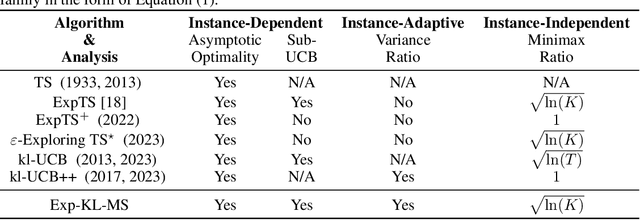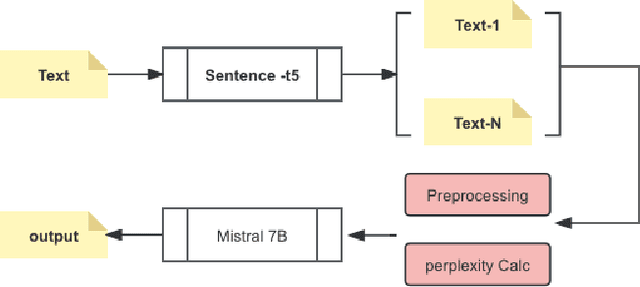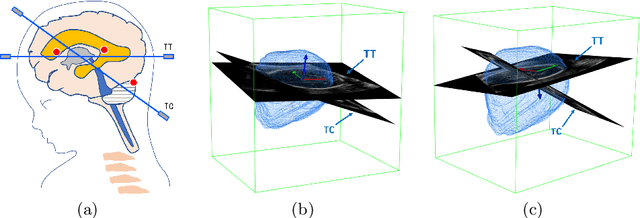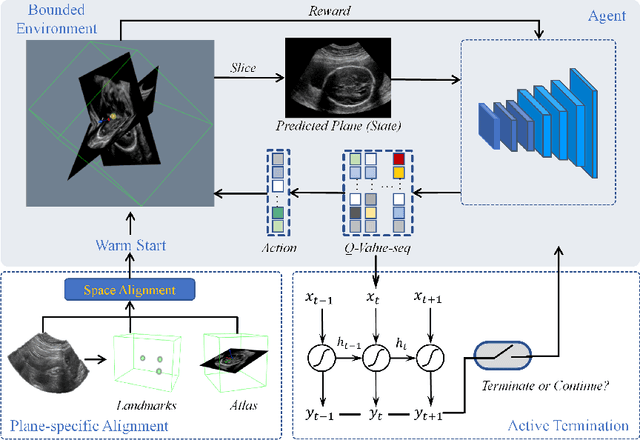Hao Qin
Distilling Multi-view Diffusion Models into 3D Generators
Apr 03, 2025Abstract:We introduce DD3G, a formulation that Distills a multi-view Diffusion model (MV-DM) into a 3D Generator using gaussian splatting. DD3G compresses and integrates extensive visual and spatial geometric knowledge from the MV-DM by simulating its ordinary differential equation (ODE) trajectory, ensuring the distilled generator generalizes better than those trained solely on 3D data. Unlike previous amortized optimization approaches, we align the MV-DM and 3D generator representation spaces to transfer the teacher's probabilistic flow to the student, thus avoiding inconsistencies in optimization objectives caused by probabilistic sampling. The introduction of probabilistic flow and the coupling of various attributes in 3D Gaussians introduce challenges in the generation process. To tackle this, we propose PEPD, a generator consisting of Pattern Extraction and Progressive Decoding phases, which enables efficient fusion of probabilistic flow and converts a single image into 3D Gaussians within 0.06 seconds. Furthermore, to reduce knowledge loss and overcome sparse-view supervision, we design a joint optimization objective that ensures the quality of generated samples through explicit supervision and implicit verification. Leveraging existing 2D generation models, we compile 120k high-quality RGBA images for distillation. Experiments on synthetic and public datasets demonstrate the effectiveness of our method. Our project is available at: https://qinbaigao.github.io/DD3G_project/
Achieving adaptivity and optimality for multi-armed bandits using Exponential-Kullback Leiblier Maillard Sampling
Feb 20, 2025



Abstract:We study the problem of Multi-Armed Bandits (MAB) with reward distributions belonging to a One-Parameter Exponential Distribution (OPED) family. In the literature, several criteria have been proposed to evaluate the performance of such algorithms, including Asymptotic Optimality (A.O.), Minimax Optimality (M.O.), Sub-UCB, and variance-adaptive worst-case regret bound. Thompson Sampling (TS)-based and Upper Confidence Bound (UCB)-based algorithms have been employed to achieve some of these criteria. However, none of these algorithms simultaneously satisfy all the aforementioned criteria. In this paper, we design an algorithm, Exponential Kullback-Leibler Maillard Sampling (abbrev. \expklms), that can achieve multiple optimality criteria simultaneously, including A.O., M.O. with a logarithmic factor, Sub-UCB, and variance-adaptive worst-case regret bound.
LaMMA-P: Generalizable Multi-Agent Long-Horizon Task Allocation and Planning with LM-Driven PDDL Planner
Sep 30, 2024



Abstract:Language models (LMs) possess a strong capability to comprehend natural language, making them effective in translating human instructions into detailed plans for simple robot tasks. Nevertheless, it remains a significant challenge to handle long-horizon tasks, especially in subtask identification and allocation for cooperative heterogeneous robot teams. To address this issue, we propose a Language Model-Driven Multi-Agent PDDL Planner (LaMMA-P), a novel multi-agent task planning framework that achieves state-of-the-art performance on long-horizon tasks. LaMMA-P integrates the strengths of the LMs' reasoning capability and the traditional heuristic search planner to achieve a high success rate and efficiency while demonstrating strong generalization across tasks. Additionally, we create MAT-THOR, a comprehensive benchmark that features household tasks with two different levels of complexity based on the AI2-THOR environment. The experimental results demonstrate that LaMMA-P achieves a 105% higher success rate and 36% higher efficiency than existing LM-based multi-agent planners. The experimental videos, code, and datasets of this work as well as the detailed prompts used in each module are available at https://lamma-p.github.io.
Enhancing Healthcare through Large Language Models: A Study on Medical Question Answering
Aug 08, 2024

Abstract:In recent years, the application of Large Language Models (LLMs) in healthcare has shown significant promise in improving the accessibility and dissemination of medical knowledge. This paper presents a detailed study of various LLMs trained on the MedQuAD medical question-answering dataset, with a focus on identifying the most effective model for providing accurate medical information. Among the models tested, the Sentence-t5 combined with Mistral 7B demonstrated superior performance, achieving a precision score of 0.762. This model's enhanced capabilities are attributed to its advanced pretraining techniques, robust architecture, and effective prompt construction methodologies. By leveraging these strengths, the Sentence-t5 + Mistral 7B model excels in understanding and generating precise medical answers. Our findings highlight the potential of integrating sophisticated LLMs in medical contexts to facilitate efficient and accurate medical knowledge retrieval, thus significantly enhancing patient education and support.
Probablistic Restoration with Adaptive Noise Sampling for 3D Human Pose Estimation
May 03, 2024



Abstract:The accuracy and robustness of 3D human pose estimation (HPE) are limited by 2D pose detection errors and 2D to 3D ill-posed challenges, which have drawn great attention to Multi-Hypothesis HPE research. Most existing MH-HPE methods are based on generative models, which are computationally expensive and difficult to train. In this study, we propose a Probabilistic Restoration 3D Human Pose Estimation framework (PRPose) that can be integrated with any lightweight single-hypothesis model. Specifically, PRPose employs a weakly supervised approach to fit the hidden probability distribution of the 2D-to-3D lifting process in the Single-Hypothesis HPE model and then reverse-map the distribution to the 2D pose input through an adaptive noise sampling strategy to generate reasonable multi-hypothesis samples effectively. Extensive experiments on 3D HPE benchmarks (Human3.6M and MPI-INF-3DHP) highlight the effectiveness and efficiency of PRPose. Code is available at: https://github.com/xzhouzeng/PRPose.
Physics-Based Trajectory Design for Cellular-Connected UAV in Rainy Environments Based on Deep Reinforcement Learning
Aug 31, 2023



Abstract:Cellular-connected unmanned aerial vehicles (UAVs) have gained increasing attention due to their potential to enhance conventional UAV capabilities by leveraging existing cellular infrastructure for reliable communications between UAVs and base stations. They have been used for various applications, including weather forecasting and search and rescue operations. However, under extreme weather conditions such as rainfall, it is challenging for the trajectory design of cellular UAVs, due to weak coverage regions in the sky, limitations of UAV flying time, and signal attenuation caused by raindrops. To this end, this paper proposes a physics-based trajectory design approach for cellular-connected UAVs in rainy environments. A physics-based electromagnetic simulator is utilized to take into account detailed environment information and the impact of rain on radio wave propagation. The trajectory optimization problem is formulated to jointly consider UAV flying time and signal-to-interference ratio, and is solved through a Markov decision process using deep reinforcement learning algorithms based on multi-step learning and double Q-learning. Optimal UAV trajectories are compared in examples with homogeneous atmosphere medium and rain medium. Additionally, a thorough study of varying weather conditions on trajectory design is provided, and the impact of weight coefficients in the problem formulation is discussed. The proposed approach has demonstrated great potential for UAV trajectory design under rainy weather conditions.
Kullback-Leibler Maillard Sampling for Multi-armed Bandits with Bounded Rewards
Apr 28, 2023Abstract:We study $K$-armed bandit problems where the reward distributions of the arms are all supported on the $[0,1]$ interval. It has been a challenge to design regret-efficient randomized exploration algorithms in this setting. Maillard sampling~\cite{maillard13apprentissage}, an attractive alternative to Thompson sampling, has recently been shown to achieve competitive regret guarantees in the sub-Gaussian reward setting~\cite{bian2022maillard} while maintaining closed-form action probabilities, which is useful for offline policy evaluation. In this work, we propose the Kullback-Leibler Maillard Sampling (KL-MS) algorithm, a natural extension of Maillard sampling for achieving KL-style gap-dependent regret bound. We show that KL-MS enjoys the asymptotic optimality when the rewards are Bernoulli and has a worst-case regret bound of the form $O(\sqrt{\mu^*(1-\mu^*) K T \ln K} + K \ln T)$, where $\mu^*$ is the expected reward of the optimal arm, and $T$ is the time horizon length.
Autonomous Navigation of an Ultrasound Probe Towards Standard Scan Planes with Deep Reinforcement Learning
Mar 01, 2021



Abstract:Autonomous ultrasound (US) acquisition is an important yet challenging task, as it involves interpretation of the highly complex and variable images and their spatial relationships. In this work, we propose a deep reinforcement learning framework to autonomously control the 6-D pose of a virtual US probe based on real-time image feedback to navigate towards the standard scan planes under the restrictions in real-world US scans. Furthermore, we propose a confidence-based approach to encode the optimization of image quality in the learning process. We validate our method in a simulation environment built with real-world data collected in the US imaging of the spine. Experimental results demonstrate that our method can perform reproducible US probe navigation towards the standard scan plane with an accuracy of $4.91mm/4.65^\circ$ in the intra-patient setting, and accomplish the task in the intra- and inter-patient settings with a success rate of $92\%$ and $46\%$, respectively. The results also show that the introduction of image quality optimization in our method can effectively improve the navigation performance.
Agent with Warm Start and Active Termination for Plane Localization in 3D Ultrasound
Oct 10, 2019



Abstract:Standard plane localization is crucial for ultrasound (US) diagnosis. In prenatal US, dozens of standard planes are manually acquired with a 2D probe. It is time-consuming and operator-dependent. In comparison, 3D US containing multiple standard planes in one shot has the inherent advantages of less user-dependency and more efficiency. However, manual plane localization in US volume is challenging due to the huge search space and large fetal posture variation. In this study, we propose a novel reinforcement learning (RL) framework to automatically localize fetal brain standard planes in 3D US. Our contribution is two-fold. First, we equip the RL framework with a landmark-aware alignment module to provide warm start and strong spatial bounds for the agent actions, thus ensuring its effectiveness. Second, instead of passively and empirically terminating the agent inference, we propose a recurrent neural network based strategy for active termination of the agent's interaction procedure. This improves both the accuracy and efficiency of the localization system. Extensively validated on our in-house large dataset, our approach achieves the accuracy of 3.4mm/9.6{\deg} and 2.7mm/9.1{\deg} for the transcerebellar and transthalamic plane localization, respectively. Ourproposed RL framework is general and has the potential to improve the efficiency and standardization of US scanning.
 Add to Chrome
Add to Chrome Add to Firefox
Add to Firefox Add to Edge
Add to Edge